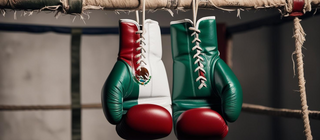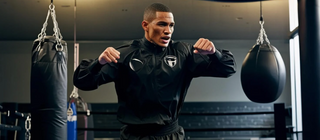Boxing blows: what they are and how to train them
Boxing, one of the oldest and most respected combat sports, is based on a combination of technique, speed e strategy. Every boxer, from amateur to professional, must master a number of basic strikes that, with training, can be adapted and varied to create a unique offensive arsenal. Let's examine the main blows of boxing and how each can be used effectively in the ring.
1. The Jab
The jab is considered by many to be the most fundamental blow in boxing. Performed with the forward hand than the guard, usually the left for right-handed boxers, it is a quick, direct strike. It does not have the primary purpose of inflicting significant damage, but is used to maintain distance from the opponent, break the rhythm, set up combinations and create opportunities for more powerful strikes.
The jab requires precision and quickness rather than strength, and a boxer who masters it can keep his opponent in check and maintain an advantageous position in the ring.
2. The Direct (Cross)
The jab, also known as the cross, is a more powerful blow than the jab and is executed with the back hand, the one furthest away from the opponent. It is thrown by crossing the center line of the body, from which it takes its name, and is often used as the concluding blow in combinations. The power of the jab comes from the rotation of the hips and torso, combined with a fluid movement of the back arm.
When executed correctly, the jab can inflict significant damage as it takes advantage of the full extension of the body and arm, reaching the opponent with force and precision.
3. The Hook (Hook)
The hook is a circular blow that is executed from the side, usually to the opponent's head or body. The left hook is most common, but it can also be executed with the right hand. It is a powerful blow, made devastating by the rotation of the torso and the transfer of weight from one leg to the other.
Its lateral trajectory makes the hook difficult to predict and parry, especially when used in combination with other strikes. It is an effective weapon for circumventing the opponent's defense by striking the lateral areas of the head or torso.
4. The Uppercut
The uppercut is one of the most spectacular and devastating strikes in boxing. It is thrown from the bottom to the top, usually aiming at the opponent's chin or body. It can be performed with either hand, although the right uppercut is often more powerful.
The blow uses leg strength and upward thrust, and is especially effective when the opponent is close or drops his guard. If well executed, the uppercut can destabilize the opponent's balance and cause knock-outs, as it hits a vulnerable area such as the chin.
5. The Uppercut to the Body
The uppercut to the body, a variation of the uppercut, is less well known than the uppercut to the head, but just as important. It targets the solar plexus or rib area, where boxers are particularly vulnerable. This blow is not always intended to cause a knock-out, but rather to weaken the opponent, reducing his stamina and ability to move quickly.
A boxer who constantly attacks the body can "break" the opponent's defense, forcing him to lower his hands and create openings for head shots.
6. The Overhand Strike
The overhand strike is a variation of the jab, but is thrown with an arcing trajectory. This circular motion allows it to bypass the opponent's guard, especially if the boxer is shorter or if the opponent has a high guard. Although it takes longer to execute than other jabs, it can be striking and powerful, especially if thrown with timing.
Mastery of fundamental strikes is essential for any boxer, but the true art of boxing lies in the ability to combine these strikes, adapt and modify them according to the situation in the ring. The jab, jab, hook and uppercut are only the basis of a much larger repertoire, which includes variations, feints and defensive movements. Understanding when and how to use each strike distinguishes a good boxer from a great champion.
All of these strikes can be trained in 3 ways:
1. With one sparring partner, that is, a sparring partner with whom you can try these strikes as if it were a real match. To train with a sparring partner, we recommend that you use some Boxing gloves sparring, which you should choose according to your weight. Also read this article: Guide to how to choose the Boxing gloves boxing
2. With your boxing master, through training at the focus pads. I focus pads are targets worn by your master that you must hit on command.
3. With specific equipment. For strength training we recommend the use of a Heavy bag or a water bag, to be precise, tools such as the punching ball or the Double end bag.







